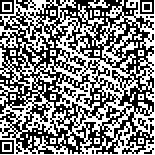| 本文已被:浏览 2209次 下载 1470次 |

码上扫一扫! |
|
|
| 墨西哥湾扇贝和扇贝“渤海红”及其杂交子代的遗传分析 |
|
姚高友1,2, 谭杰1,2, 吴羽媛1, 苏晓盈1, 刘付少梅3, 张元1,2, 方家熙4, 陈楠生5, 王春德6, 刘志刚1,2
|
|
1.广东海洋大学水产学院 湛江 524088;2.广东省南海经济无脊椎动物健康养殖工程研究中心 湛江 524088;3.湛江银浪海洋生物技术有限公司 湛江 524022;4.香港理工大学应用生物及化学科技学系 香港 999077;5.西蒙·弗雷泽大学理学院分子生物和生物化学系 加拿大不列颠哥伦比亚省本那比市 V5A 1S6;6.青岛农业大学海洋与工程学院 青岛 266109
|
|
| 摘要: |
| 利用SSR (Simple Sequence Repeats)分子标记技术,对扇贝“渤海红”、墨西哥湾扇贝(Argopecten irradians concentricus)及其杂交子代3个群体共90个个体的遗传多样性进行分析。结果显示,8个SSR位点共扩增出67个等位基因,各位点等位基因数范围为4~14个,平均等位基因数为8.5个。扇贝“渤海红”有效等位基因数(Ne)、平均观测杂合度(Ho)和多态信息含量(PIC)最高,分别为2.3947、0.504和0.462;3个群体的遗传分化指数(Fst)、基因流(Nm)和固定系数(Fis)分别为0.1398、1.5387和0.3698。对亲代与杂交子代间的遗传分化分析表明,杂交子代与扇贝“渤海红”的遗传距离最小(0.1188),遗传相似度最大(0.888),杂交子代的遗传结构更偏向亲本扇贝“渤海红”。研究结果可为扇贝“渤海红”和墨西哥湾扇贝群体种质资源评估和杂交新品种的选育提供理论参考。 |
| 关键词: 墨西哥湾扇贝 扇贝“渤海红” 杂交 遗传多样性 |
| DOI:10.19663/j.issn2095-9869.20190502001 |
| 分类号: |
| 基金项目: |
|
| Genetic Analysis of Argopecten irradians concentricus, “Bohai Red” and Their Hybrids |
|
YAO Gaoyou1,2, TAN Jie1,2, WU Yuyuan1, SU Xiaoying1, LIUFU Shaomei3, ZHANG Yuan1,2, FANG Jiaxi4, CHEN Nansheng5, WANG Chunde6, LIU Zhigang1,2
|
|
1.Fisheries College of Guangdong Ocean University, Zhanjiang 524088;2.Guangdong Province Nanhai Economic Invertebrates Healthy Breeding Engineering Research Center, Zhanjiang 524088;3.Zhanjiang Silverwave Marine Biotechnology Co.Ltd., Zhanjiang 524022;4.Department of Applied Biology and Chemical Technology of Hong Kong Polytechnic University, Hong Kong 999077;5.Department of Molecular Biology and Biochemistry of Simon Fraser University, British Columbia V5A 1S6;6.College of Marine Science and Engineering, Qingdao Agricultural University, Qingdao 266109
|
| Abstract: |
| Hybridization between the ‘Bohai Red’ and Argopecten irradians concentricus was conducted. The hybrids exhibited heterosis in terms of survival rate, growth rate, and heat tolerance, demonstrating substantial potential to replace A. irradians concentricus. To ensure the efficient use of these hybrids, we need to understand the genetic structure of the hybrids and their parents. Microsatellites are widely used to assess the genetic diversity of aquaculture species and to construct a quantitative trait locus due to their characteristics such as abundant polymorphism, rich information, and high codominance and conservation. In this research, the genetic diversity of 90 individuals in 3 populations of A. irradians concentricus, ‘Bohai Red’, and their hybrids was analyzed using 8 pairs of microsatellite primers. A total of 67 alleles were amplified, and 4~14 alleles at each locus were generated, with a mean allele number of 8.5. Effective allele number, expected heterozygosity, and polymorphic content were the highest in ‘Bohai Red’ (2.3947, 0.504, and 0.462, respectively). The genetic differentiation index, gene flow, and fixed coefficient were 0.1398, 1.5387, and 0.3698, respectively. Between the hybrids and ‘Bohai Red’, the genetic distance was the smallest (0.1188) and the genetic similarity was the highest (0.888), suggesting their similar genetic structures. These findings provide a reference for the genetic analyses of ‘Bohai Red’ and A. irradians concentricus as well as for the breeding of new varieties. |
| Key words: Argopecten irradians concentricus “Bohai Red” Hybridization Genetic diversity |